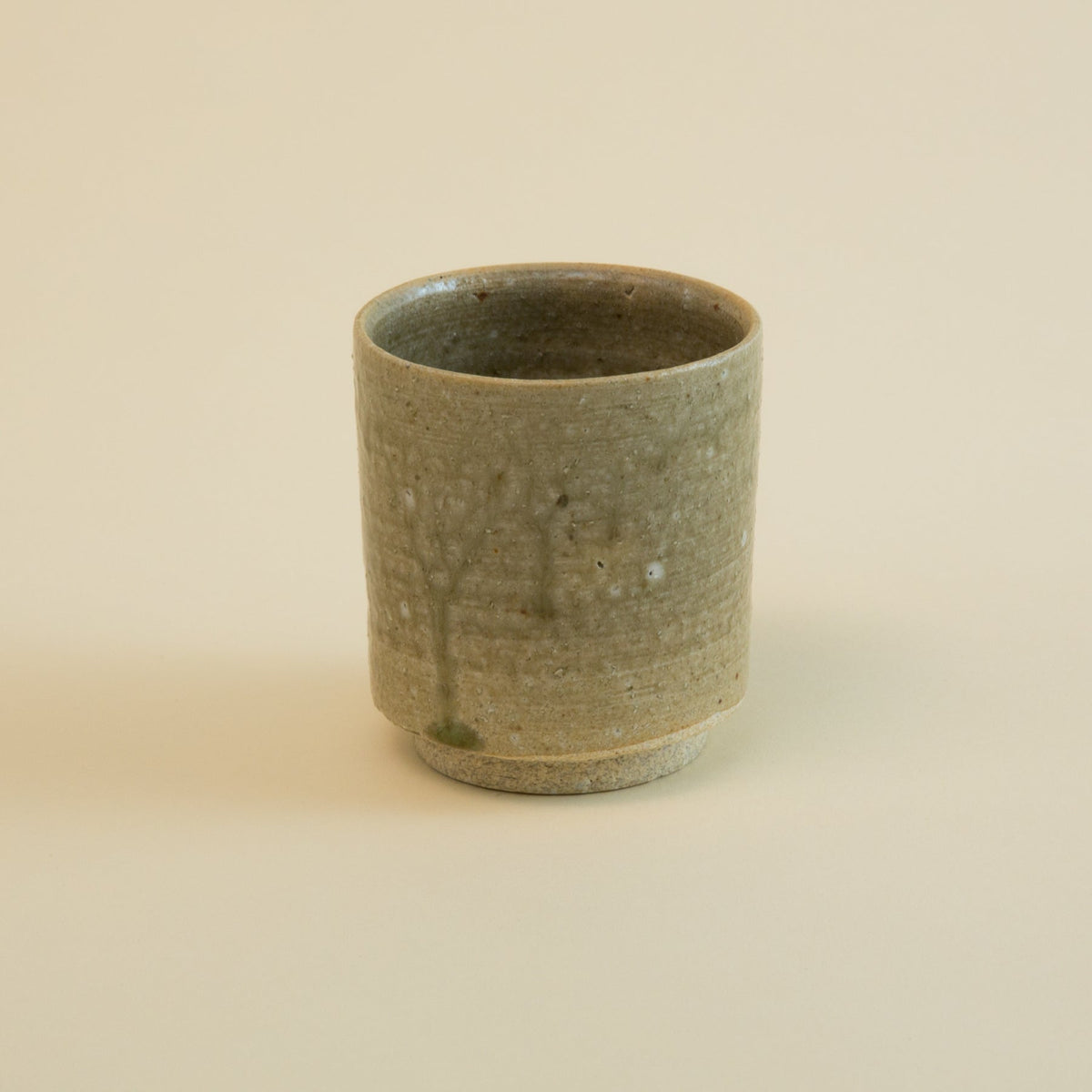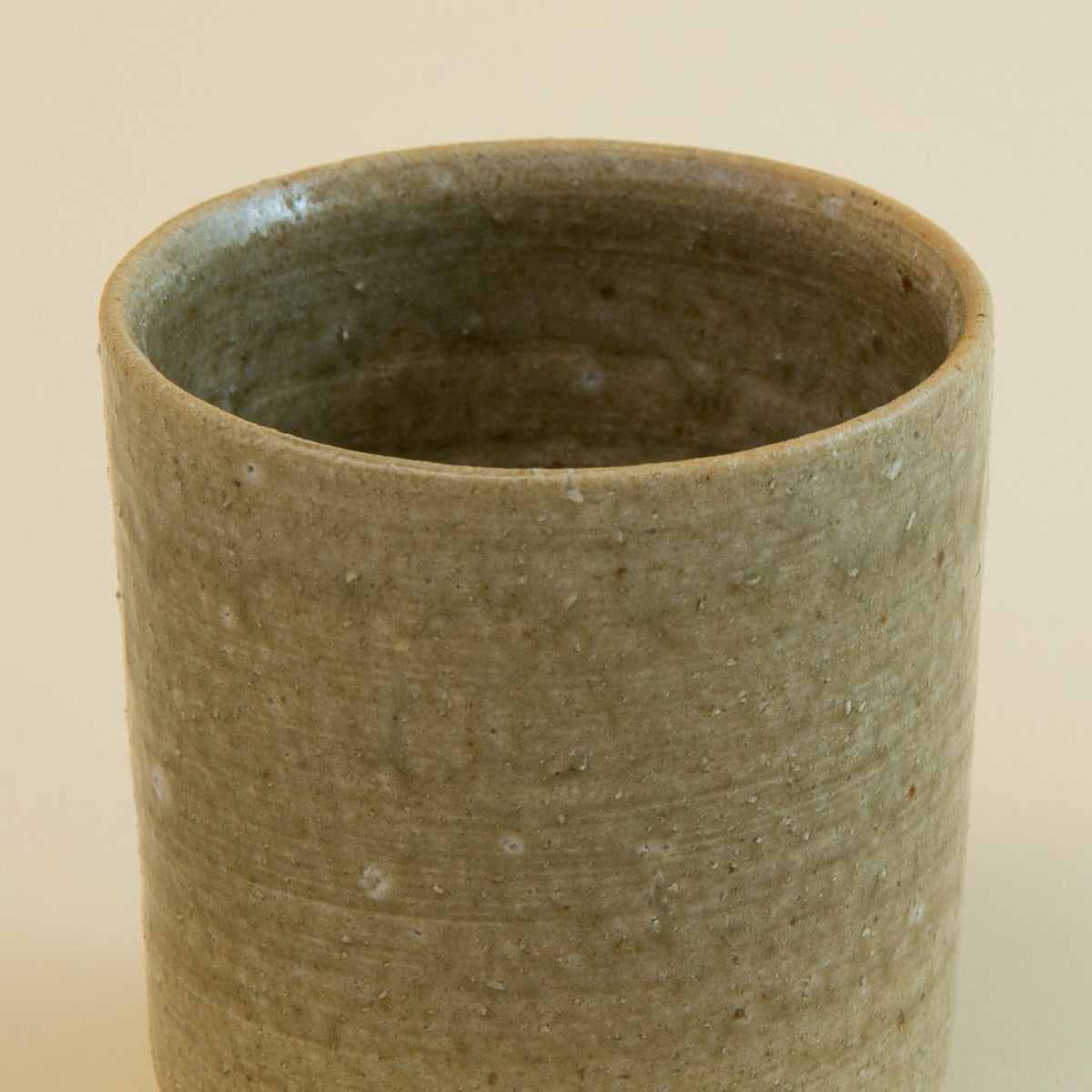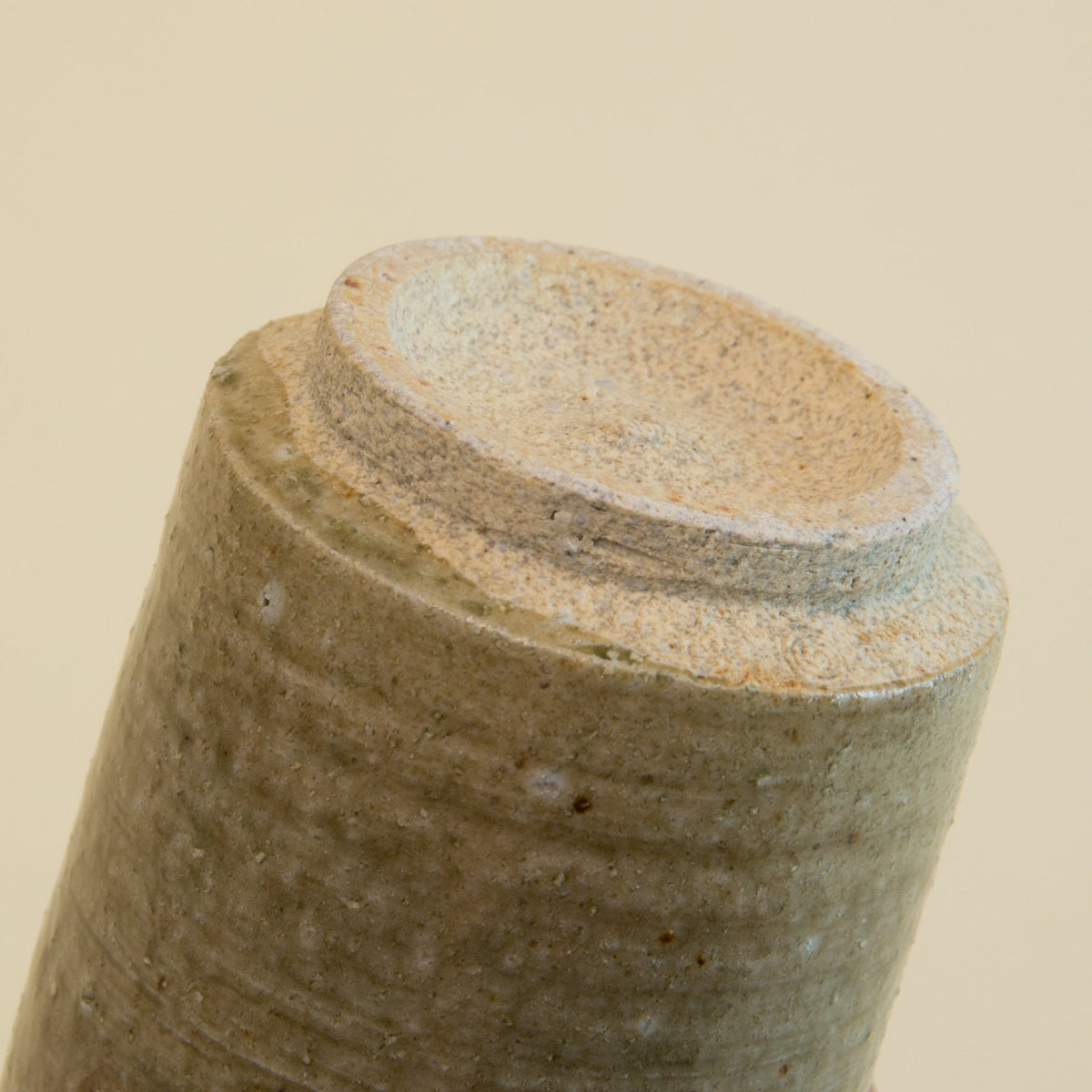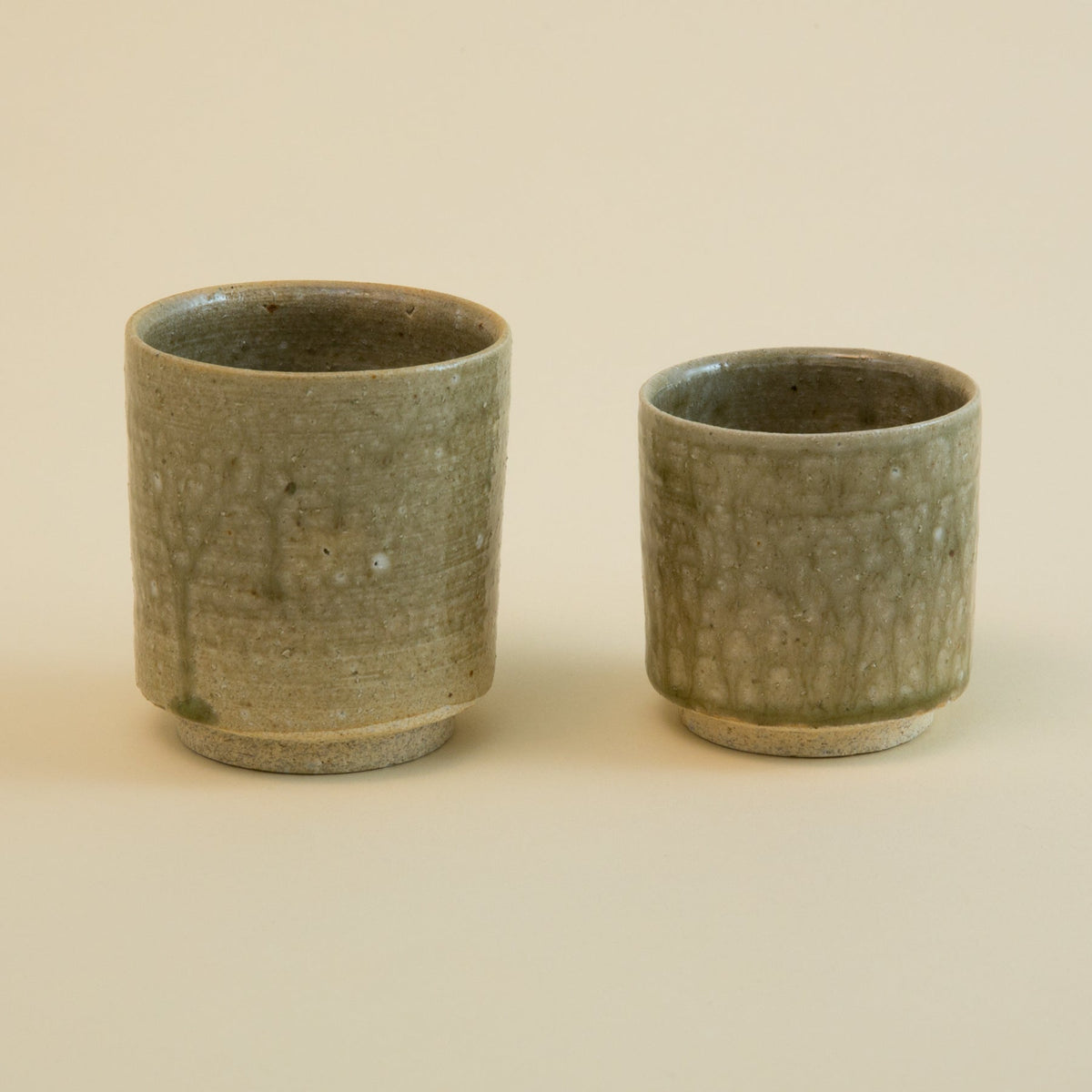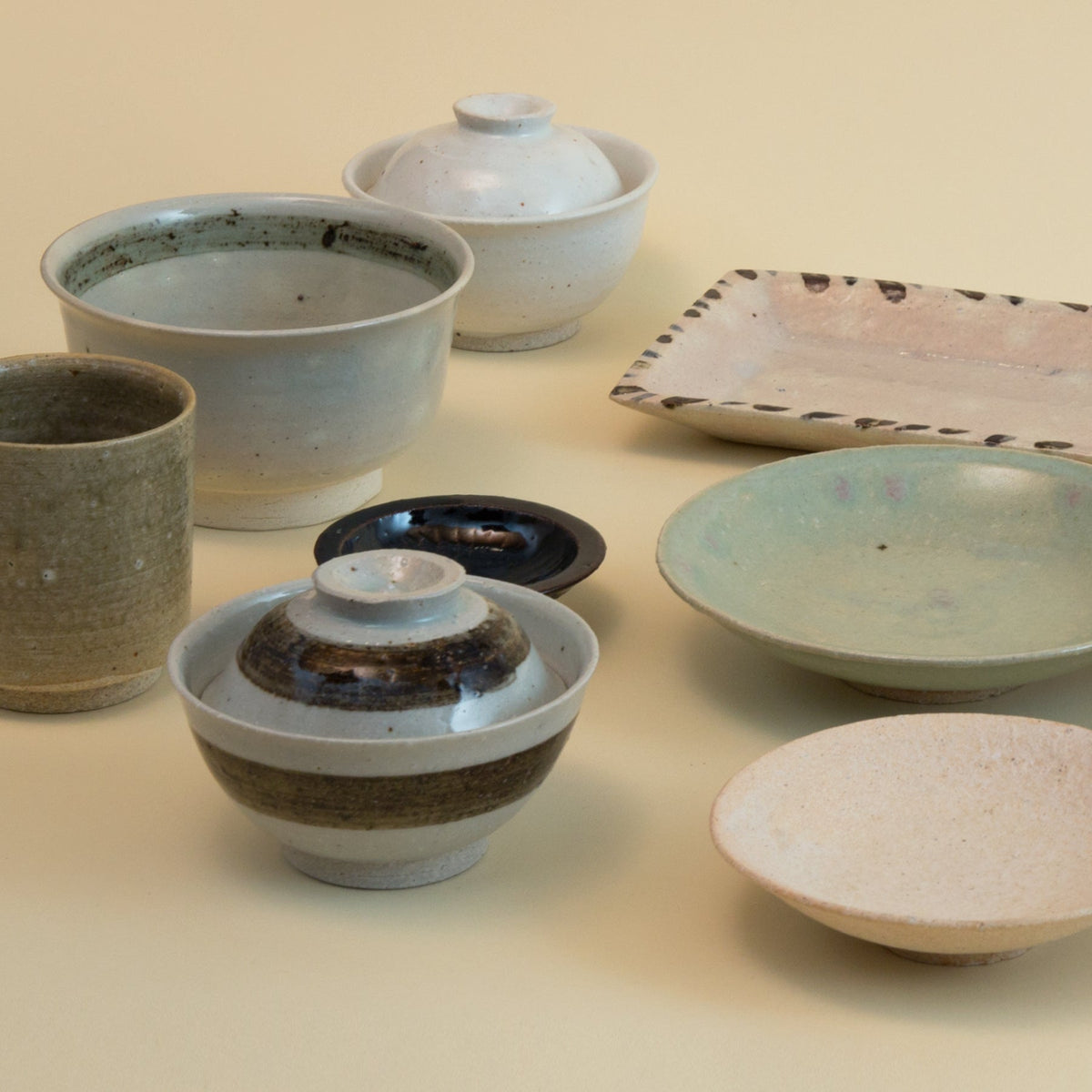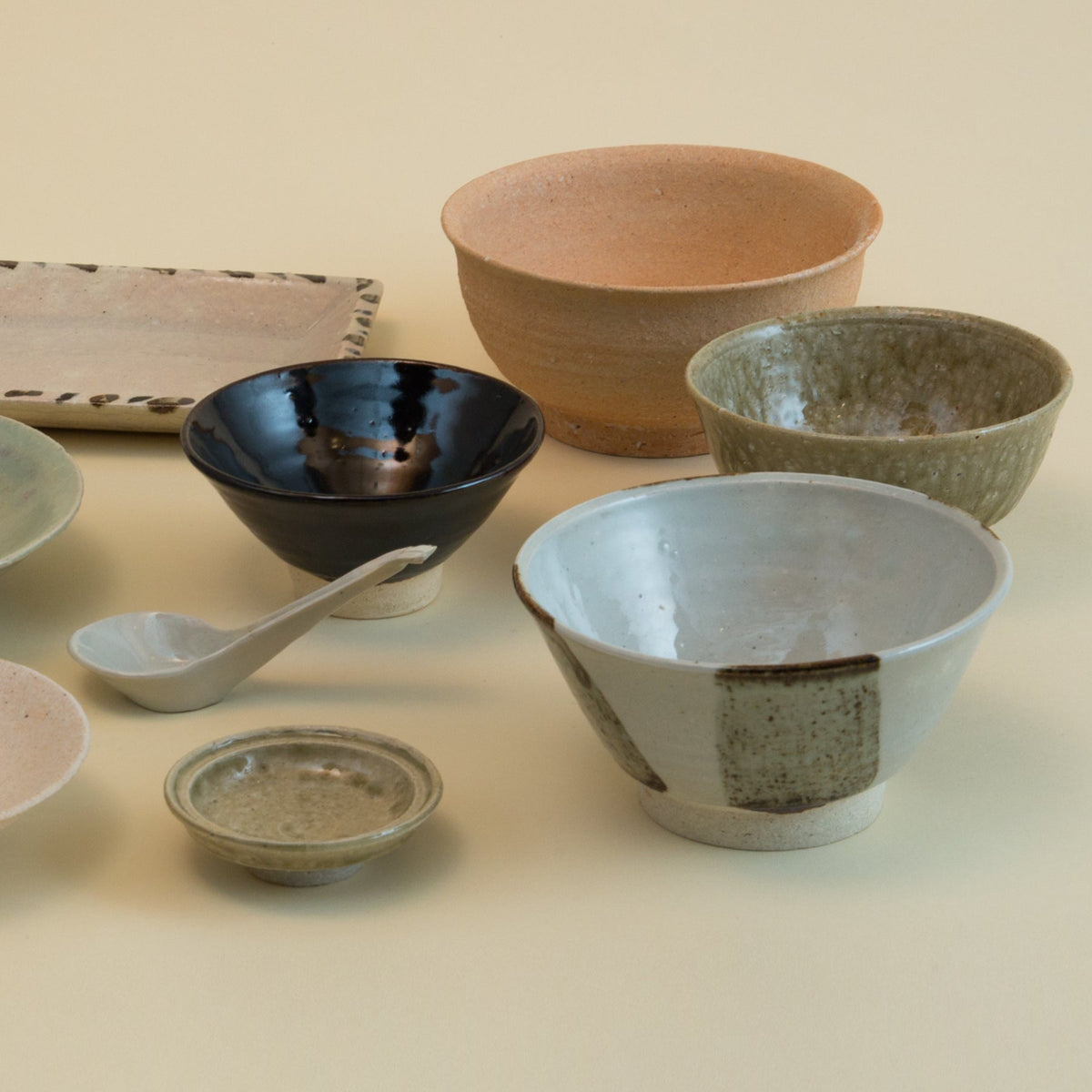Iga Tea Cup - Matsubai
Iga-yaki are named after Iga clay, and these ceramics have been made in the Mie prefecture of Japan from as early as the 7th century CE. The remarkable characteristics of Iga clay have made Iga-yaki particularly sought after throughout history. The clay beds in Mie were formed in ancient times when the entire province was submerged under the Biwa Lake. As a result, rich sources of plankton and other microscopic organic matter exist within the clay. These evaporate during the intense firing process, producing a durable, porous material with natural heat retention. The clay can be rough and brittle and this texture requires incredible expertise to handle. Experienced potters spend a life-time perfecting the technique. This means production is limited and each handmade vessel is entirely unique.
Historically Iga-yaki vases were used by feudal Daimyo and other members of nobility as expensive gifts, while yunomi and tea dishes were desirable additions to tea ceremonies. Modern Iga-yaki are often used in the same way, but are also commonly made for cooking and dining. The high heat retentive qualities of the cups, bowls and dishes means food stays warm, while rice cookers and donabe made in Iga-yaki are the essential utensil for hot-pots, soups and stews. these useful objects, made with traditional materials and great skill retain a natural beauty, and with proper care can last a lifetime.
Item details: Iga Yaki tea cups are highly valued as part of tea ceremonies due to the ways the clay naturally retains heat, as well as its tactile surface. The texture makes handling the cup part of the enjoyable experience of drinking tea. Matsubai is a light, sage green glaze that is produced when the ash of red pine trees come into contact with the clay at 1400 degrees celsius. Because the wood is free of impurities it produces the transluscent-jade colour called biidoro from the Portguese for glass, vidro. The incredibly high firing temperatures make this glaze as hard as stone, but the soft, translucent lustre of the pale green appears light and crystalline.
Also also available in: Sekkai (white-shiny) Kouchoseki (pink) Kuroame (black) Shino (white-matte).
Measurements: Small: H: 3" D: 3"
Care Instructions: All Iga-yaki must go through a traditional preparation process called Medome, in order to prevent staining and to seal the dish. Medome translates literally to “pore stopper” and it is necessary to prevent anything from leaking through the tiny holes in the clay. Rinse white short grain rice in a pot of water until the water turns milky white. Take the rice out and place the Iga ware in the water. Gently heat the vessel under a low heat for 20-30 minutes and then let it cool completely. After cooling, remove the Iga ware and rinse it thoroughly. Once it has completely dried it is ready for use. For the best maintenance, towel drying after each use of the Iga ware is recommended.
Do not use dishwasher.
